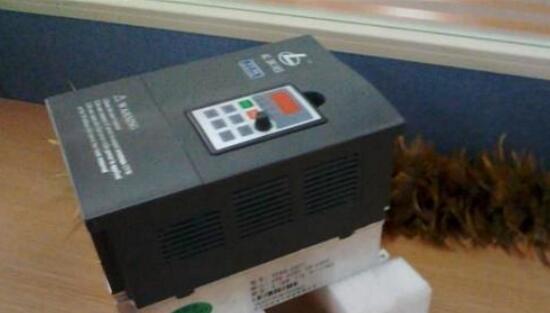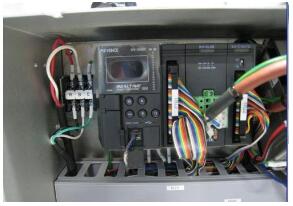When the commonly used inverter is in use, can it meet the requirements of the transmission system? The parameter setting of the inverter is very important. If the parameter setting is incorrect, the inverter will not work normally.
1, parameter settings
Commonly used inverters, generally shipped from the factory, the manufacturer has a default value for each parameter, these parameters are called factory values. In the case of these parameter values, the user can operate normally in panel operation, but the panel operation does not meet the requirements of most transmission systems. Therefore, before using the inverter correctly, the user should proceed to the inverter parameters from the following aspects:
(1) Confirm the motor parameters. The inverter sets the power, current, voltage, speed and maximum frequency of the motor in the parameters. These parameters can be directly obtained from the motor nameplate.
(2) The control mode adopted by the inverter, namely speed control, torque control, PID control or other means. After taking the control method, it is generally necessary to perform static or dynamic identification according to the control accuracy.
(3) Set the startup mode of the inverter. Generally, the inverter is set to start from the panel at the factory. The user can select the startup mode according to the actual situation. You can use the panel, external terminal, communication mode and so on.
(4) For the selection of the given signal, the frequency of the inverter can also be given in various ways. The panel is given, the external reference, the external voltage or current is given, the communication mode is given, and of course the frequency of the inverter is given. It can also be the sum of one or several of these ways. After the above parameters are correctly set, the inverter can basically work normally. If you want better control effect, you can only modify the relevant parameters according to the actual situation.
2, the parameter setting class fault handling
Once the parameter setting class fault occurs, the inverter can not operate normally. Generally, the parameters can be modified according to the manual. If the above is not possible, it is best to restore all the parameters to the factory values, and then reset according to the above steps. For each company's inverter, the parameter recovery method is different.

The overvoltage of the inverter is concentrated on the tributary voltage of the DC bus. Under normal circumstances, the inverter DC power is the average value after three-phase full-wave rectification. If calculated with a line voltage of 380V, the average DC voltage Ud = 1.35 U line = 513V. When the overvoltage occurs, the storage capacitor of the DC bus will be charged. When the voltage is up to 760V, the inverter overvoltage protection action. Therefore, the inverter has a normal operating voltage range. When the voltage exceeds this range, the inverter may be damaged. There are two types of common overvoltages.
1. Input AC power supply overvoltage
This situation means that the input voltage exceeds the normal range, generally occurs when the load on the holiday is light, the voltage rises or falls, and the line fails. At this time, it is better to disconnect the power supply, check and process.
2. Power generation overvoltage
The probability of occurrence of this situation is relatively high, mainly because the synchronous speed of the motor is higher than the actual speed, so that the motor is in the power generation state, and the frequency converter has no brake unit installed, and two cases can cause this fault.
(1) When the inverter drags the large inertia load, its deceleration time is set relatively small. During the deceleration process, the speed of the inverter output is relatively fast, while the load is slowed down by the resistance of the load, so that the speed of the load drag motor It is higher than the speed corresponding to the frequency of the inverter output, the motor is in the power generation state, and the inverter has no energy feedback unit, so the voltage of the DC circuit of the inverter tributary rises, exceeds the protection value, and the fault occurs, which often occurs in the paper machine. In the dry part, dealing with such a fault can increase the regenerative braking unit, or modify the inverter parameters to set the inverter deceleration time longer. The functions of increasing the regenerative braking unit include energy consumption type, parallel DC bus absorption type, and energy feedback type. The energy consumption type connects a braking resistor in parallel with the DC link of the inverter, and controls the on/off of the power tube by detecting the DC bus voltage. The parallel DC bus absorption type is used in a multi-motor transmission system. Such a system often has one or several motors that are often operated in a power generation state to generate regenerative energy that is absorbed by the motor in an electric state through the parallel bus. The energy feedback type inverter-side converter is reversible, and the inverter can return the regenerative energy to the grid when regenerative energy is generated.
(2) This fault may also occur when multiple electric actuators are operating the same load, mainly due to no load distribution. Taking two motors to drag a load as an example, when the actual rotational speed of one motor is greater than the synchronous speed of the other motor, the motor with a high rotational speed is equivalent to the prime mover, and the low rotational speed is in a power generating state, causing a malfunction. In the paper machine often occurs in the press section and the net section, and load distribution control is required during processing. It is possible to adjust the characteristics of the inverter in the branch of the paper machine drive speed chain.

Overcurrent faults can be divided into acceleration, deceleration, and constant speed overcurrent. It may be caused by the acceleration/deceleration time of the inverter being too short, the load is abrupt, the load is not evenly distributed, and the output is short-circuited. At this time, it is generally possible to extend the acceleration/deceleration time, reduce the sudden change of the load, apply the energy-consuming braking element, carry out the load distribution design, and inspect the line. If the load inverter is disconnected or the overcurrent fault occurs, the inverter inverter circuit has been looped and the inverter needs to be replaced.
Fourth, overload failureOverload faults include variable frequency overload and motor overload. It may be caused by the acceleration time being too short, the DC braking amount is too large, the grid voltage is too low, and the load is too heavy. Generally, the acceleration time can be extended, the braking time can be extended, the grid voltage can be checked, and the like. If the load is too heavy, the selected motor and inverter cannot be dragged by the load, or it may be caused by poor mechanical lubrication. If the former, the high-power motor and inverter must be replaced; if the latter, the production machinery should be inspected.
Five, other faults1. Undervoltage
There is a problem with the input part of the inverter power supply. It needs to be checked before it can run.
2, the temperature is too high
If the motor has a temperature detecting device, check the heat dissipation of the motor; if the temperature of the inverter is too high, check the ventilation of the inverter.
3. Other situations

1. Before the inverter is powered on
The temperature and humidity of the surrounding environment should be detected first. If the temperature is too high, the inverter will overheat alarm. In severe cases, the inverter power device will be damaged and the circuit will be short-circuited. If the air is too humid, the inverter will be directly short-circuited. When the inverter is running, pay attention to whether its cooling system is in normal production, such as whether the air duct is smooth or not, and whether the fan has abnormal sound.
Generally, inverters with higher protection level, such as: IP20 and above, can be directly installed. The inverters below IP20 should be cabinet-mounted, so the heat dissipation effect of the inverter will directly affect the normal operation of the inverter. Exhaust system, such as whether the fan rotates smoothly, whether the air inlet has dust and obstructions are places that we can not ignore in daily inspection. Whether the motor reactor, transformer, etc. are overheated, have odor; whether the inverter and the motor have abnormal noise; whether the inverter panel current display is too large or the current change range is too large, and whether the output UVW three-phase voltage and current are balanced.
2, regular maintenance
Regular dust removal check whether the fan air inlet is blocked, and clean the air filter cooling air duct and internal dust every month.
Regular inspection should be carried out once a year: check whether the screws, bolts and plug-ins are loose, whether the grounding and phase-to-phase resistance of the input and output reactors are short-circuited, and should be greater than several tens of megaohms. Whether the conductor and the insulator are corroded, if necessary, wipe it with alcohol in time. Measure the smoothness of the voltage of each circuit output of the switching power supply, such as: 5V, 12V, 15V, 24V and other voltages. Whether there is any ignition mark on the contact of the contactor, it is necessary to replace the new contactor of the same model or larger than the original capacity; confirm the correctness of the control voltage, perform the sequence protection action test; confirm that the protection display circuit is not abnormal; confirm that the inverter is The balance of the output voltage when operating alone.

(1) Regularly dedust the inverter, focusing on the rectifier cabinet, the inverter cabinet and the control cabinet. If necessary, the rectifier module, the inverter module and the circuit board in the control cabinet can be removed for dust removal. Whether the air inlet and upper air outlet of the inverter are dusty or blocked due to excessive dust accumulation. The frequency converter has a large amount of ventilation due to its own heat dissipation. Therefore, after a certain period of operation, the surface area dust is very serious, and it is necessary to clean the dust regularly.
(2) Open the front door of the inverter, disassemble the rear door, carefully check whether the AC and DC busbars are deformed, corroded, oxidized, whether the screws at the busbar connection are loose, and whether the screws at the fixed points are loose or not. Whether the insulating sheet or the insulating column for fixing has aging cracking or deformation, if it should be replaced in time, re-tighten, and the busbar that has been deformed must be corrected and reinstalled.
(3) After removing the dust from the circuit board and busbar, perform the necessary anti-corrosion treatment, apply the insulating varnish, and remove the burrs from the busbars where partial discharge and arcing have occurred before processing. For insulation boards that have been insulated and penetrated, the damaged parts shall be removed, and the insulation board of the corresponding insulation grade shall be insulated in the vicinity of the damage, and the insulation shall be tightened and tested and deemed to be qualified before being put into use.
(4) Whether the fan running and rotating in the rectifier cabinet and the inverter cabinet are normal. When stopping, turn it by hand to observe whether the bearing is stuck or murmur, and replace the bearing or repair if necessary.
(5) Conduct a comprehensive inspection of the input, rectification and inverter, DC input fast-melting, and find that the burning is replaced in time.
(6) Whether the capacitor in the intermediate DC circuit has leakage, whether the casing is expanded, bubbling or deformed, whether the safety valve is broken, and the capacitor capacity, leakage current, and withstand voltage can be tested under conditions, which does not meet the requirements. The capacitors are replaced. For new capacitors or unused capacitors that have been unused for a long time, they must be passivated before replacement. The usage period of the filter capacitor is generally 5 years. If the usage time is more than 5 years, the capacitance capacity, leakage current, and withstand voltage are obviously deviated from the test standard, and should be replaced partially or completely as appropriate.
(7) Perform electrical inspection on the rectifier and inverter diodes and GTO multimeters, measure the forward and reverse resistance values, and carefully record in the pre-established table to see if the resistance between the poles is normal. , the same type of device is consistent, and replace if necessary.
(8) Check the main contactor and other auxiliary contactors in the A1 and A2 incoming cabinets, and carefully observe whether the contactors of the contactors have arcing, burrs or surface oxidation, unevenness, and find such problems. Replace the corresponding moving and static contacts to ensure that their contact is safe and reliable.
(9) Carefully check whether the terminal block is aging or loose, whether there is a hidden fault in the short circuit, whether the connection of each cable is firm, whether the wire is damaged, and whether the plugs of each circuit board are firmly connected. Whether the connection to and from the main power line is reliable, whether there is heat generation and oxidation at the connection, and whether the grounding is good.
(10) Whether the reactor has abnormal squeaking, vibration or odor.
Fog And Smoke Machines ,Mini Fog Machine,Small Fog Machine,Dry Ice Smoke Machine
Guangzhou Cheng Wen Photoelectric Technology Co., Ltd. , https://www.cwledwall.com